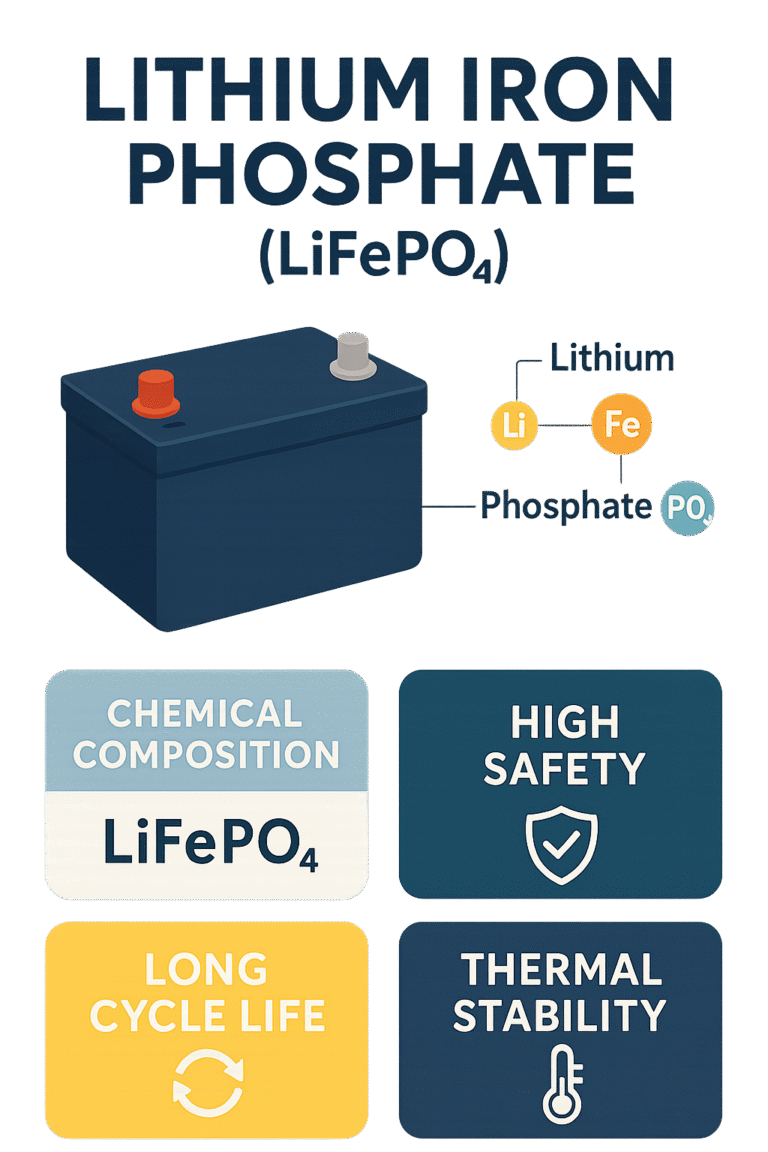Lithium Iron Phosphate (LiFePO₄) is a type of lithium-ion battery known for its high safety, thermal stability, and long lifespan. It uses lithium iron phosphate as the cathode material, which makes it more stable and less prone to overheating or catching fire compared to other lithium-ion batteries. LiFePO₄ batteries typically have a nominal voltage of 3.2V per cell and can last for over 2,000 to 5,000 charge cycles, making them ideal for applications that require long-term reliability. They are also more environmentally friendly since they don’t use toxic metals like cobalt.
These batteries are widely used in solar energy storage systems, electric vehicles, portable power banks, and backup power supplies. Although they have a lower energy density than some other lithium-ion chemistries (like NMC or NCA), their safety, durability, and consistent performance make them a popular choice for both residential and commercial use. Despite a higher initial cost, their long service life and minimal maintenance requirements often make them more cost-effective over time.
1. Long Lifespan : LiFePO₄ batteries typically last 2,000 to 5,000+ charge cycles , far longer than lead-acid or other lithium chemistries.
2. High Safety and Thermal Stability: These batteries are highly resistant to overheating, fire, and explosion , making them one of the safest lithium battery options.
3. Consistent Performance: They provide a stable voltage output during discharge, ensuring consistent power delivery.
4. Fast Charging Capability: LiFePO₄ batteries can be charged quickly without degrading battery life, improving energy availability.
5. Wide Temperature Tolerance: Performs well in extreme hot and cold temperatures , making them ideal for outdoor and solar applications.
6. Low Maintenance: No need for active maintenance like equalizing or topping off water, unlike lead-acid batteries.
7. Eco-Friendly and Non-Toxic: Made from non-toxic materials (no cobalt or heavy metals), and are 100% recyclable .
8. Lightweight: Typically 50–70% lighter than lead-acid batteries of the same capacity.
9. High Discharge Rates: Can handle high current loads , useful for applications like electric vehicles and power tools.

WhatsApp us